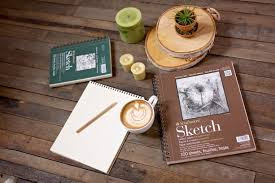1. Build a Focused, Purposeful Portfolio
Your portfolio is your calling card. It should showcase your strongest work and demonstrate your understanding of visual storytelling, design thinking, and functionality within a game pipeline. Tailor your portfolio to the role you're applying for: if it's an environment concept art position, focus on environments. Include callouts, sketches, design iterations, and process, not just polished illustrations.
2. Study the Studios You Want to Work For
Every studio has a style, tone, and design philosophy. Spend time analyzing the art direction of the games they create and build personal projects that align with their visual language. This shows that you understand their needs and are ready to contribute.
3. Develop Strong Fundamentals
A strong grasp of anatomy, perspective, light, color, and composition is non-negotiable. These are the foundation of all great concept art. Continue practicing regularly, even outside of your portfolio pieces. Lifelong learning is key.
4. Understand the Production Pipeline
Concept art is not just about beautiful images; it’s about communicating ideas clearly to 3D artists, designers, and animators. Show that you can think like a designer and solve visual problems. Awareness of game engines, asset modularity, and practical constraints can make you much more valuable.
5. Network and Get Your Work Seen
Share your art consistently on platforms like ArtStation, Instagram, and LinkedIn. Join Discord groups, online communities, and forums where game artists gather. Attend industry events, online workshops, or portfolio reviews. Opportunities often come from visibility and connection.
6. Stay Professional and Prepared
Have a resume and a short, clear introduction about yourself. Be ready to explain your process, how you take feedback, and what you love about game development. Studios are hiring a team member, not just a skill set.
7. Stay Resilient and Keep Evolving
Rejection is part of the journey. Keep improving, stay adaptable, and be honest about where your weaknesses are. Each piece you create and each application you send is a step closer to your goal.
Hiring a concept artist in the game industry is about more than talent. It’s about mindset, discipline, and clarity. Focus on what you can control, your portfolio, your fundamentals, and your visibility, and you’ll be well on your way.
#ConceptArtCareer #GameIndustryTips #HowToGetHired #PortfolioAdvice #VisualDevelopment #SimonLocheArt







